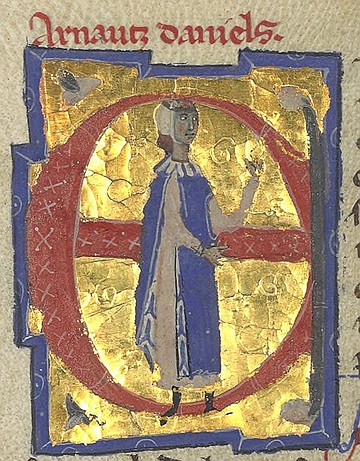 Facebook
Facebook
 X
X
 Instagram
Instagram
 TikTok
TikTok
 Youtube
Youtube

—translated by Garrick Davis

Arnaut Daniel (1180-1200) was one of the more famous medieval Provençal troubadour poets. His verse is marked by an obscurity of thought and expression, a style called trobar clus (“hermetic verse”). Daniel invented more than one verse form, including the sestina, a series of six six-line unrhymed stanzas followed by a three-line seventh stanza. The last word of each line in the first stanza is repeated in each succeeding stanza until the seventh, in which two of the repeating words are incorporated per line. T.S. Eliot’s dedication of The Waste Land to Ezra Pound included a phrase from Dante, who regarded Daniel as miglior fabbro (“the best maker” — i.e. poet).


—translated by Garrick Davis

Arnaut Daniel (1180-1200) was one of the more famous medieval Provençal troubadour poets. His verse is marked by an obscurity of thought and expression, a style called trobar clus (“hermetic verse”). Daniel invented more than one verse form, including the sestina, a series of six six-line unrhymed stanzas followed by a three-line seventh stanza. The last word of each line in the first stanza is repeated in each succeeding stanza until the seventh, in which two of the repeating words are incorporated per line. T.S. Eliot’s dedication of The Waste Land to Ezra Pound included a phrase from Dante, who regarded Daniel as miglior fabbro (“the best maker” — i.e. poet).
Comments